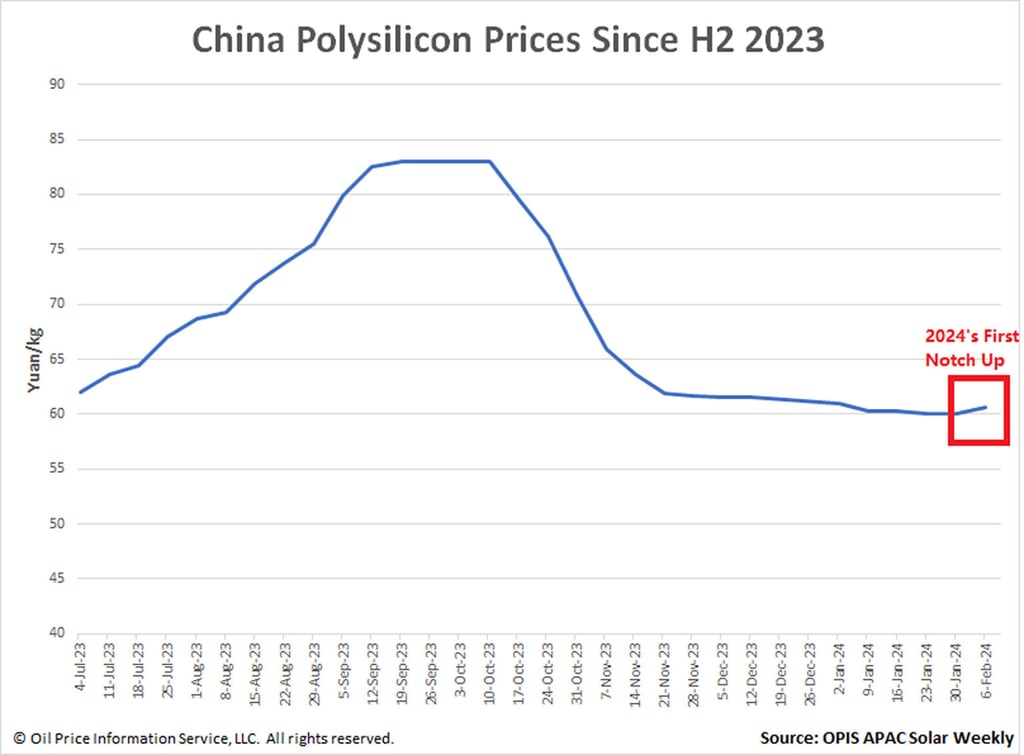Polysilicon Prices in China Experience First Increase in 2024; Potential Impact on Global Solar Market
A new weekly report for PV magazine from Dow Jones business OPIS offers a brief overview of the primary pricing trends in the worldwide PV market.


According to a recent report from OPIS, a Dow Jones firm, China's Mono Grade polysilicon prices have risen significantly, marking the first increase this year. As the Lunar New Year approaches, there is an increase in purchasing sentiment, which causes prices to climb. However, business analysts predict a dip in market activity during the February celebrations.
The solar sector in the European Union can gain indirectly from the rise in polysilicon costs in China. Rising polysilicon costs may push EU solar producers to look into alternate sources or change up their procurement approaches. By lowering reliance on a single market, this diversity may help the EU's solar supply chain become more robust and competitive.
The restocking of February and March delivery cargoes, along with an overall rise in polysilicon supply, might have an influence on the globally solar market. As supply pressures increase, solar producers' price dynamics and competitiveness may shift. The rise in both N-type and P-type polysilicon pricing indicates a complex market scenario, which might have an impact on the costs and profitability of solar energy projects.
The rise in polysilicon pricing does not necessarily mean that China's hegemony in the solar sector is coming to an end, even though it does point to a thriving and changing market. With new facilities like the Phase 1 polysilicon facility of Hoshine Silicon and the polysilicon plant of Xinyi Glass coming online, China is still investing in increasing its ability to produce polysilicon. The continued development indicates that China intends to preserve its leading position in the solar sector while responding to market conditions.
With higher polysilicon production predicted in January, the market is likely to see more swings. The impact of supply pressures, along with the introduction of new capacity in March, will be critical in deciding the market's direction. The worldwide solar sector should pay special attention to how these developments affect pricing, production techniques, and market rivalry.
As the sector adapts to these developments, stakeholders must stay nimble, taking into account future adjustments in supply chains and market dynamics. The changing landscape may bring both problems and opportunities for solar companies worldwide, underlining the importance of strategic planning and adaptation.
Image: OPIS
